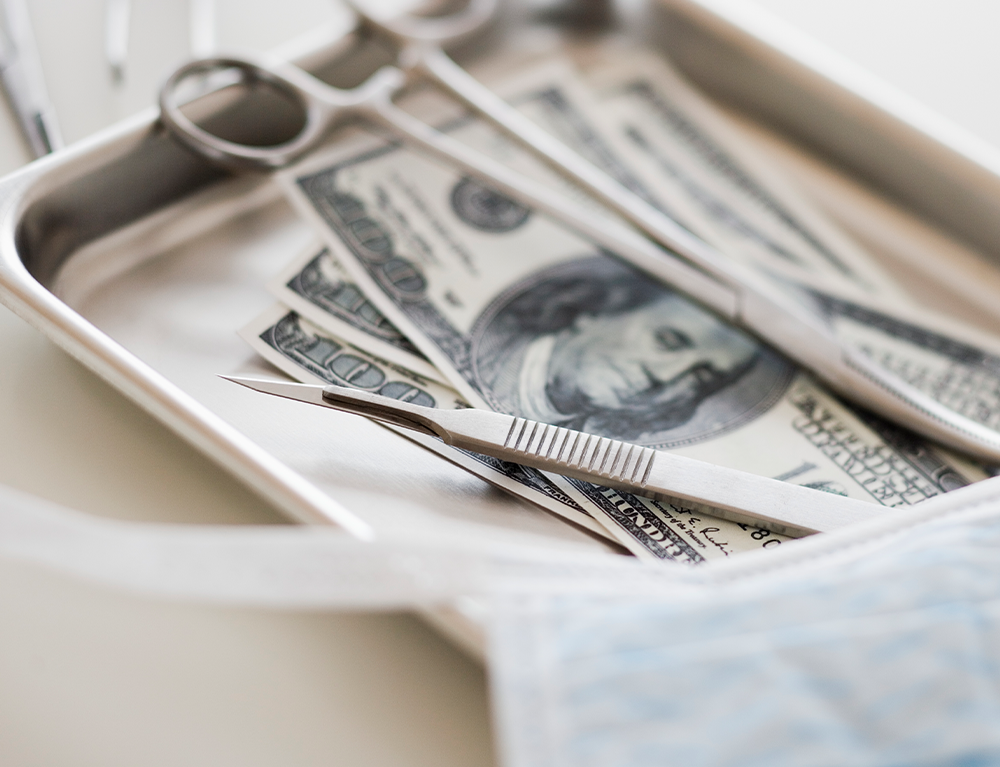90-day pause or not, experts are getting ready for the impact of new global tariffs. How will beauty, aesthetic treatment and plastic surgery be affected?
Featured Experts
- Roy Kim, MD, is a board-certified plastic surgeon with practices in Beverly Hills, CA, and San Francisco
- R. Laurence Berkowitz, MD, is a board-certified plastic surgeon in Campbell, CA
- Jeanine Downie, MD, is a board-certified dermatologist in Montclair, NJ
- Jennifer Segal, MD, is a board-certified dermatologist based in Houston
- Kimberly Lee, MD, is a board-certified plastic surgeon based in Beverly Hills, CA
How would tariffs change aesthetics?
There are a lot of moving parts of the aesthetic industry, and tariff changes can impact several of those parts.
“Regarding aesthetic injectables, the production site matters,” explains Beverly Hills plastic surgeon and American Society of Plastic Surgeons member Roy Kim, MD. “Daxxify (a neurotoxin) and Radiesse (a filler) are made in the USA, so pricing should stay the same. And fillers made in Canada or the UK will probably be subjected to lower tariffs than the European Union.”
There’s also the chance that neurotoxins and fillers made in the EU will be exempt from tariffs or have lower tariff rates. We just have to wait and see.
The most likely issue is surgical disposables, like gowns, gloves and drapes, which are almost all produced in China.
“Medical devices such as lasers and parts for other medical devices are produced in China, so the cost of these medical devices will probably go up, and the prices of these services will probably go up as well,” Dr. Kim adds.
And where prices do need to change, Campbell, CA plastic surgeon R. Laurence Berkowitz, MD, agrees that they can be tough for patients to adjust to. “It can be difficult for patients to understand that the cost of the procedure hasn’t really gone up,” Dr. Berkowitz explains. “It’s the cost of the anesthetic, the operating room, the supplies, etc. Those prices have gone up in recent years, and may continue to do so.”
What are experts expecting?
Politically, experts are ready for anything, gearing up for any potential outcome in the 90-day tariff pause. And that means getting ready to absorb any price increases.
“Plastic surgeons and aesthetic injectors will work very hard behind the scenes to absorb costs,” says Dr. Kim. “For example, the American Society of Plastic Surgeons (ASPS) has excellent group pricing with certain vendors, including medical supplies with Henry Shein, cosmetic surgery financing with CareCredit and so on.”
And if the tariffs do go through, prices will rise.
Montclair, NJ dermatologist Jeanine Downie, MD, adds that the beauty industry will also feel the impact. “These tariffs will negatively affect the beauty world by slowing down out of the country natural ingredients and many other ingredients that we use in our shampoos, conditioners, face care, anti-aging and hygiene products,” she says.
Are aesthetic practitioners concerned?
“Unfortunately, things will get much more costly as [a] result of these tariffs,” Dr. Downie says. “Personally, I am very concerned.”
According to Houston dermatologist Jennifer Segal, MD, one major point of concern comes with practitioners trying to cut costs for patients. “It concerns me to see practitioners making choices about product based on price,” Dr. Segal explains. “As a rule, you want to choose the best products, not the cheapest options.”
Beverly Hills, CA, facial plastic surgeon Kimberly Lee, MD, agrees. “Shopping by the lowest price is dangerous and not recommended when seeking out the best experts to address your face or any aesthetic procedure,” she says. “The cost reflects the quality of service, experience and expertise provided, including the use of FDA-approved products sourced directly from the manufacturer, optimized results and thorough follow-up care.”
“It is important patients remember aesthetic treatments, whether minimally invasive or surgical, are still real medical procedures with real risks,” adds Dr. Kim. “Medical treatments are not the area to try to cut costs, find a deal or save a few bucks. Treating a complication can erase any initial perceived savings.”
